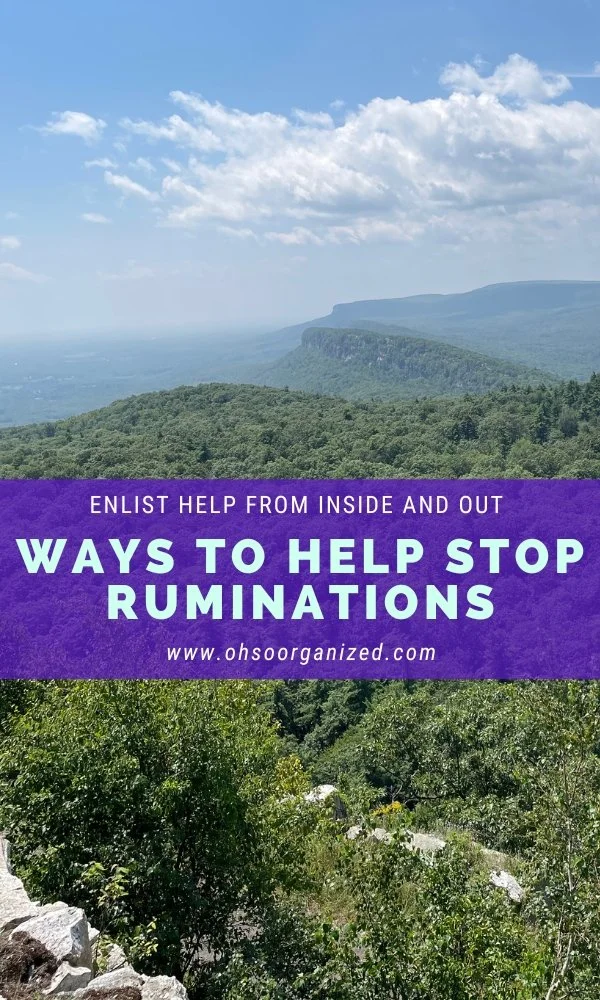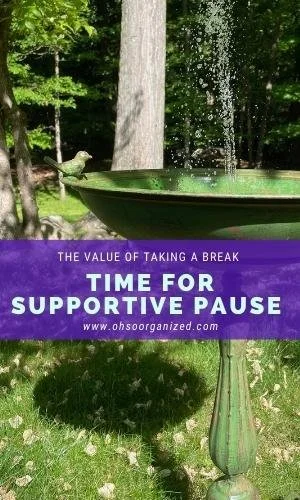Is it only me, or has your plate also become fuller since the start of the fall season? After returning from our last trip of the summer, reality hit.
There were workshops to create and make progress on. Interactions with new, returning, and potential organizing clients ramped up, and volunteer activities went into full gear. Add to these the holidays, upcoming conference travel, and my new Mindful Organizing workshop launching this week. These make my to-do list more intense than usual. This burst of activity pulses through my mind and body.
While there is nothing intrinsically wrong with having a full plate, I am reminded of a mindfulness meditation practice I worked with a while ago. Using the Insight Timer app, I listened to Justin Francisco’s meditation, Drop Your To-Do List and Just Be. It was a message I needed to hear. After meditating, I added a note to my to-do list about using this idea for a future blog post. The irony wasn’t lost on me.
It was also helpful to understand the difference between Justin’s Just Be List and my To-Don’t List, which I’ve written about before.
Justin makes the case about the benefits of taking time to just be and do nothing. This seems more viable when we’re on vacation or have less going on. I get that. I am internally driven to accomplish and be productive, but I sometimes struggle to reconcile how much I need those deep pauses. However, I have experienced the value of stopping, even briefly, and recognize the tremendous benefits of taking do-nothing breaks.
What are you in the thick of?
Are you overwhelmed with the clutter in your home?
Are you frustrated with your organizing systems?
Is your schedule overflowing?
Are you trying to create a better balance between work and personal time?
Are you working on new projects, which make it difficult to focus on anything else?
Is your to-do list so extensive that you can’t decide what to do next?
“There are tremendous benefits to taking do-nothing breaks.”
Just Be List
When you have a lot going on, it may feel like the obvious first step is to take action and work more. While those will be essential to move forward, consider this alternative. When your mind is racing and you’re stressed, it’s more challenging to focus. This is an excellent time to pause and do nothing. You’ll return refreshed after your do-nothing break. You can mindfully. . .
Stare out of the window.
Step outside to feel the sun and cool fall breeze on your skin.
Sit and close your eyes for a few moments.
Lay down with a cozy blanket and take a short nap.
Plop onto the couch and stare at the ceiling.
Notice the inhale and exhale movements of your breath.
Listen to the sounds around you.
Watch the flames flicker as you smell the scent of your favorite candle.
While doing nothing, do only that. No scrolling, list-making, or thinking about what you’ll do next. If doing nothing feels too challenging, set a timer. Give yourself 10, 15, or 20 minutes to disengage. When the buzzer dings, return to your to-list and select one small thing to focus on.
Notice how that felt. In which ways was your pause beneficial? After your break, did you feel refreshed? Were you more motivated? Could you more easily select and engage in that next small action step? How will you experiment again with just being?
I’d love to hear your thoughts. I invite you to join the conversation.











